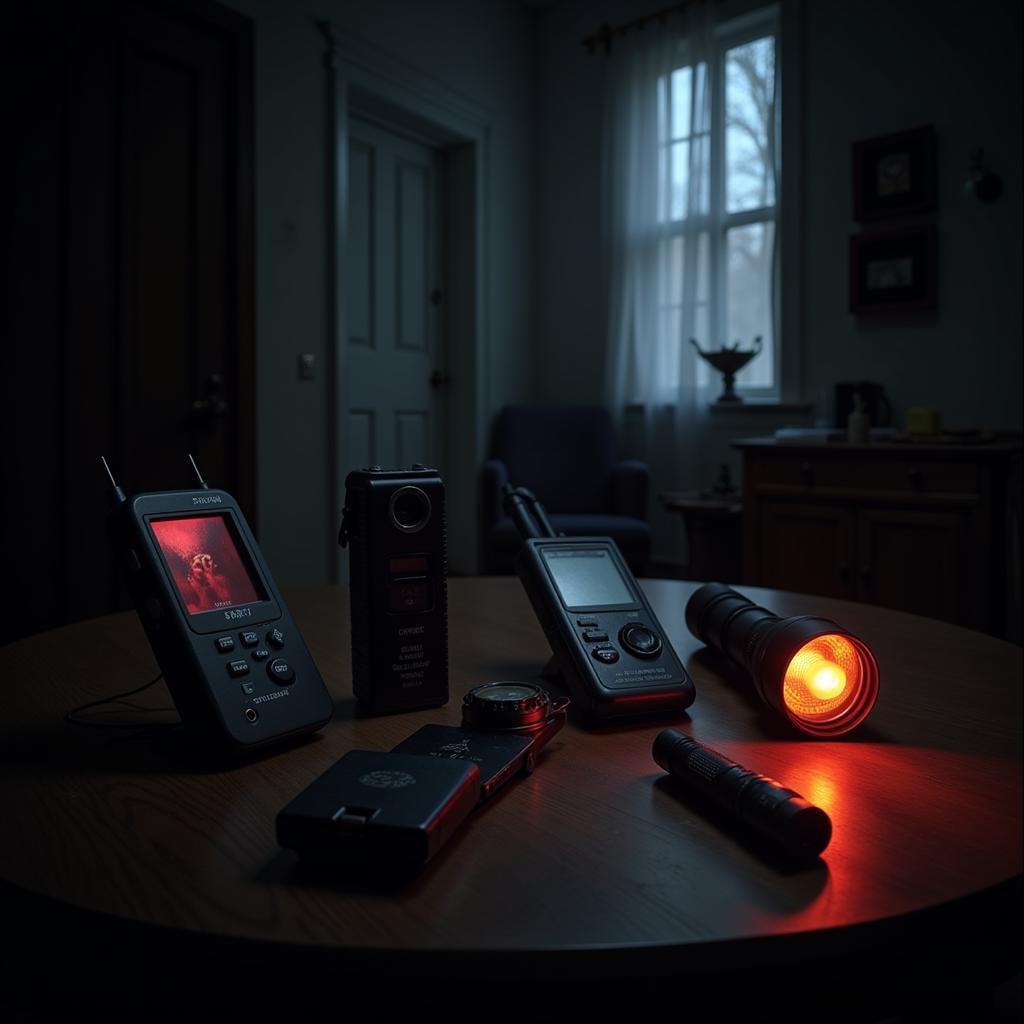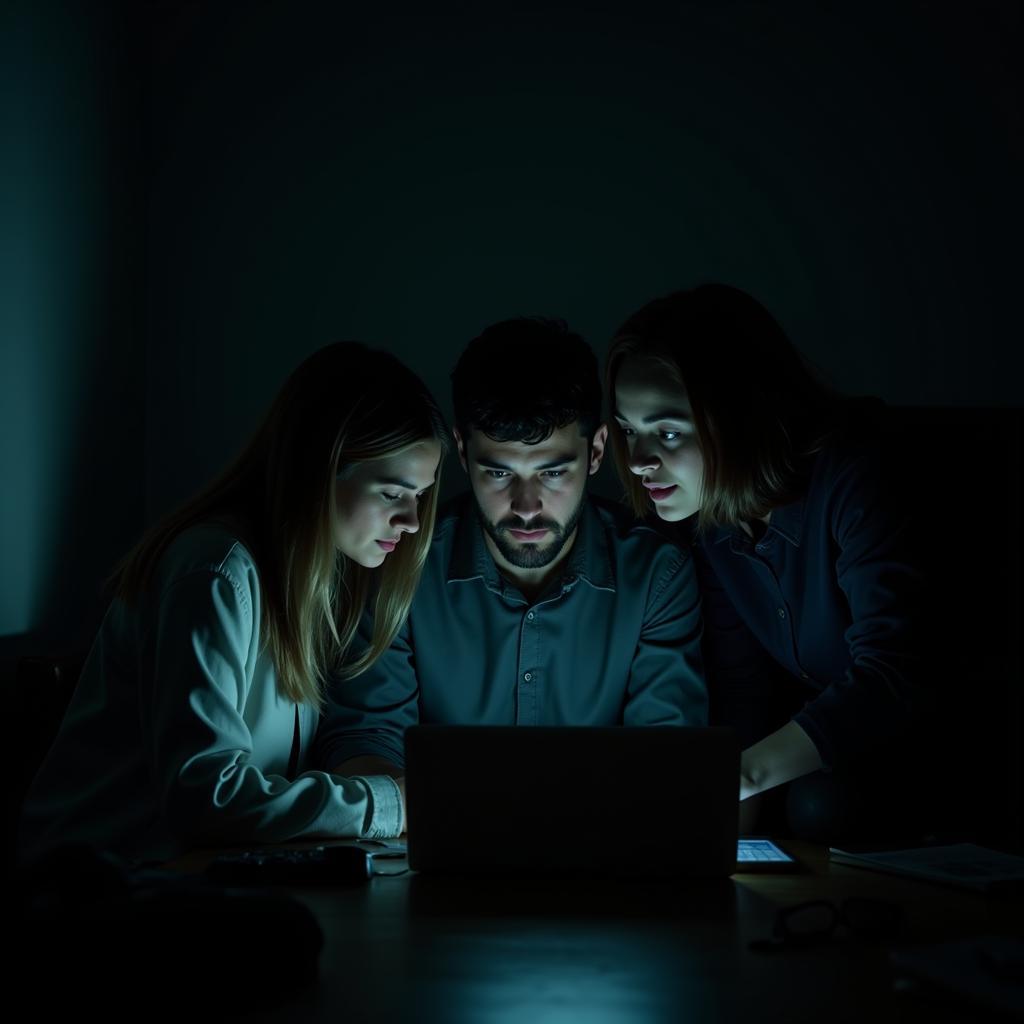The world of paranormal research, much like our own universe, operates on a delicate balance of observation, experimentation, and analysis. This intricate dance, known as the Research Cycle, acts as a guiding principle for those who dedicate their lives to unraveling the unknown.
Embracing the Unknown: The Importance of a Structured Approach
When delving into the realm of spectral apparitions, unexplained phenomena, and alleged psychic abilities, having a systematic approach is paramount. This is where the research cycle in paranormal investigations proves invaluable. Just as a detective meticulously pieces together clues to solve a case, paranormal researchers rely on this cyclical process to navigate the labyrinth of the unexplained.
Phases of the Paranormal Research Cycle: A Step-by-Step Guide
The research cycle in paranormal investigation isn’t so different from traditional scientific inquiry. It can be broken down into a series of interconnected stages:
1. Observation: Witness Testimonies and Initial Data Collection
Every investigation begins with a story, a whisper of something strange, or an account of an unsettling experience. This initial phase focuses on gathering data, which might include:
- Eyewitness accounts: Interviewing individuals who claim to have encountered paranormal activity.
- Historical research: Exploring the history of a location for past events that might contribute to the current phenomena.
- Preliminary site visits: Conducting initial observations to document the environment and any potential contributing factors.
2. Hypothesis Formation: Developing Possible Explanations
Once initial data is collected, researchers begin to formulate hypotheses, or potential explanations for the observed phenomena. These hypotheses can range from environmental factors (like electromagnetic fields) to psychological interpretations of experiences.
3. Experimentation: Testing the Theories
This stage involves testing the hypotheses developed in the previous phase. Paranormal researchers utilize a variety of tools and techniques, including:
- Electromagnetic field (EMF) meters: To detect fluctuations in electromagnetic fields, which some believe may indicate a paranormal presence.
- Thermal cameras: To identify cold spots, which are often associated with paranormal activity.
- Audio recorders: To capture electronic voice phenomena (EVPs), which are believed to be voices or sounds from spirits.
 Paranormal Investigation Equipment
Paranormal Investigation Equipment
4. Analysis: Deciphering the Data
After conducting experiments, the data collected is meticulously analyzed. This step is crucial for separating genuine anomalies from explainable occurrences.
- Audio and visual analysis: Reviewing recordings for any evidence of EVPs, apparitions, or other unexplained phenomena.
- Data correlation: Comparing data from different tools and techniques to look for patterns or correlations.
- Critical evaluation: Examining the data objectively to determine if it supports or refutes the initial hypothesis.
5. Conclusion and Further Research: A Continuous Cycle
Even when a definitive answer isn’t found, the research cycle continues. Conclusions from one investigation often lead to new questions and refined hypotheses, fueling further exploration.
The Significance of the Research Cycle in Paranormal Investigation
The research cycle is essential for several reasons:
- Provides structure and rigor: It ensures a systematic and objective approach, minimizing bias.
- Promotes critical thinking: Researchers are encouraged to question assumptions and evaluate evidence objectively.
- Enhances credibility: Adhering to a scientific methodology adds legitimacy to the field of paranormal research.
- Facilitates knowledge sharing: The documented findings, whether conclusive or not, contribute to the collective understanding of the paranormal.
 Paranormal Research Team Analyzing Data
Paranormal Research Team Analyzing Data
Seeking Answers, Embracing the Mystery
The research cycle is an ongoing journey, a quest for understanding the unexplained. While definitive answers in the paranormal realm remain elusive, the pursuit of knowledge through a structured approach ensures that every investigation, every experiment, brings us one step closer to unraveling the mysteries that lie beyond the veil of the known.
FAQs About Paranormal Research
1. What is the most compelling evidence of paranormal activity?
There’s no single answer that satisfies everyone. Some find EVPs compelling, while others might point to unexplained photographic anomalies.
2. Is paranormal research dangerous?
Like any exploration into the unknown, there are inherent risks. It’s crucial to prioritize safety and approach investigations with respect and caution.
3. Can anyone become a paranormal researcher?
Absolutely! A passion for the unknown, a curious mind, and a commitment to ethical investigation are all valuable assets.
For those interested in diving deeper into specific areas of Paranormal Research, our website offers a wealth of resources. Learn about the intricacies of motorcycle VIN number research or explore the fascinating world of research data lifecycle. Our team has also conducted intriguing research on Trek bicycle research and the challenges of finding the best outdoor research womens rain jacket. For a comprehensive understanding of the investigative process, we recommend exploring our article on the cycle of research.
Need help with a paranormal investigation or seeking answers to your questions?
Contact us at:
Phone: 0904826292
Email: research@gmail.com
Address: No. 31, Alley 142/7, P. Phú Viên, Bồ Đề, Long Biên, Hà Nội, Việt Nam.
Our dedicated team is available 24/7 to assist you on your journey into the unexplained.